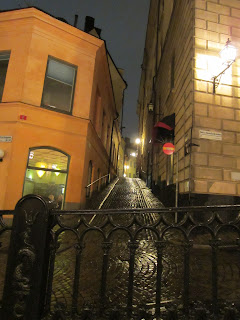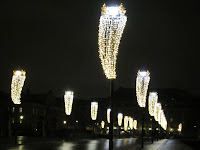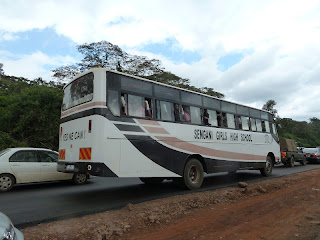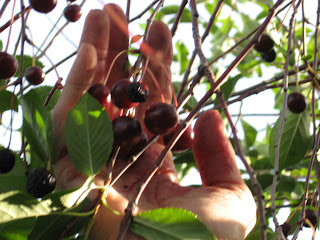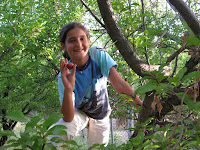We were shocked of course, but frankly, another mass shooting in a distant place didn't really touch us. We had more immediate things to worry about such as how the Taxol was going to affect Anne Louise this time round.
That afternoon, we were at A Mirror's Image - a hair salon, for a hair cut. Mine obviously, not Anne Louise's who had her hair shaved off there 3 months ago so that she wouldn't have to go through the process of it falling out gradually in clumps during her treatment. Everyone was talking about the shootings. Rumours were flying around: the killer shot his father first, his mother was a teacher, he got in because the office staff knew him... I had some updates from the internet which my hairdresser broadcast to the whole salon.
There must have been 20 people there, some joining in the discussion others listening, hairdressers and clients. The adults didn't sound moved: like us earlier, they were shocked, but not touched. Several children listened silently from raised chairs, looking rather bleakly at themselves in the mirror.
During the week I kept to my routine of long walks around the town while Anne Louise was at work during the day. One day I went by the school. The stars and stripes was flying at half-mast. Everything else was normal. There were army recruitment posters with a picture of a proud looking soldier stuck with tape to a lamp post next to the bus stop. A man stopped to watch me take a photo. I wondered if he thought I might be some kind of threat - planning something maybe?
 Yesterday, Jessie came home from school with news that someone has threatened to shoot people in the high school tomorrow. The authorities have announced that the police will be protecting the school. No one is taking it seriously - it was posted on Facebook - but still, you never know, and parents want to feel their children are safe.
Yesterday, Jessie came home from school with news that someone has threatened to shoot people in the high school tomorrow. The authorities have announced that the police will be protecting the school. No one is taking it seriously - it was posted on Facebook - but still, you never know, and parents want to feel their children are safe.Today is exactly a week since the shootings. Nothing happened here in Glens Falls. There is a measured editorial by Mark Frost in the local paper, The Chronicle, calling for 'not more laws, but consensus' over gun control. The National Rifle Association, on the other hand, says that 'good guys with guns stop bad guys with guns' and is calling for all schools to have armed guards.
Jessie went to her end of term Christmas party. Apparently the boy who issued the threat is in North Carolina. The police were in the high school anyway. She came home safely.

